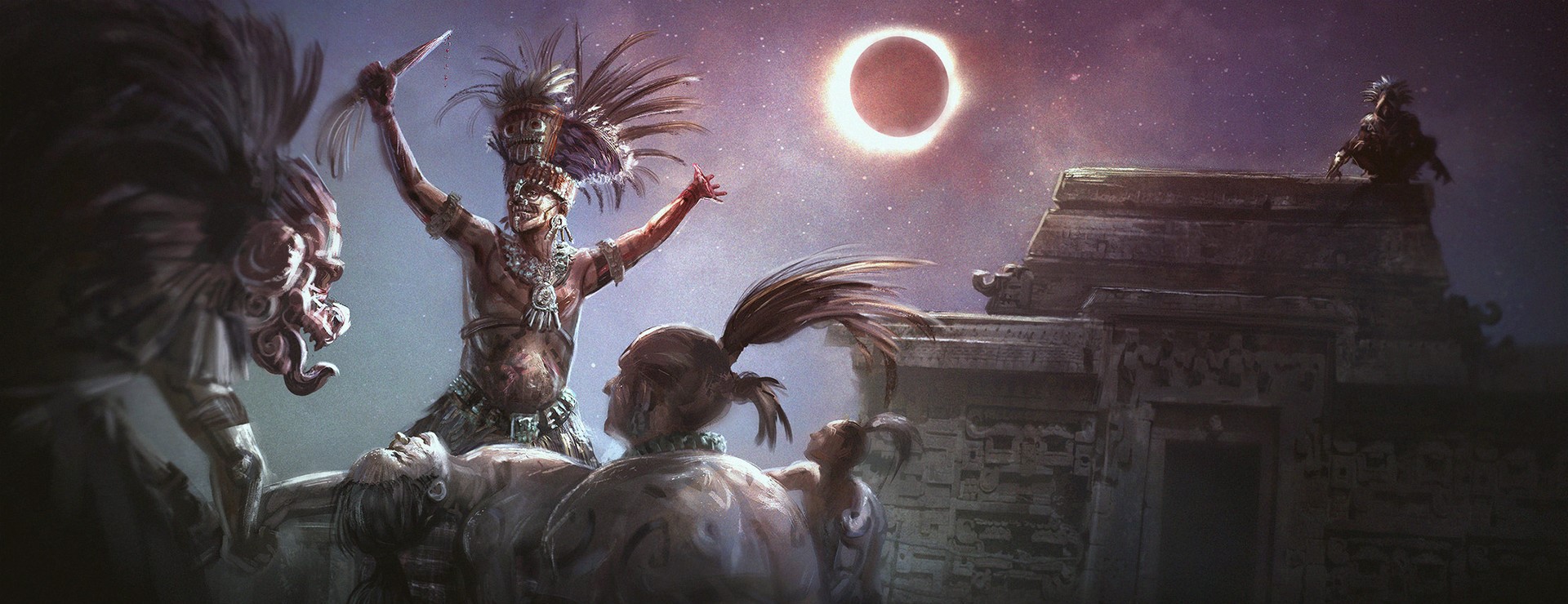Tecuilhuitontli
by hughpierre
History
This month, with it’s dedication to the goddess of salt, is a continued celebration of the coming of water and the growth of crops. It originated from those settled around Lake Coco due to the prevalence of the salt markets.
When Sangsalgu conquered and annexed of these territories, many of their traditions were adopted into the state's religious bureaucracy.
Execution
Decoration
During this month, the city's channels and reservoirs are scattered with water flowers contributed by the gardens of every Sang home in the city.Human Sacrifice
The Huixtocihuatl incarnate, specially chosen at least a year in advance, is sacrificed to deities of the crops at the temple of the rain god. But not before captives joined the temple procession to be slain by feather-adorned priests before her.Her companions fellow her in death. Who were to be first to die, the incarnate would bare witness to it all before her own time.Priests use the sharp snout of a sword fish to cut into her neck and breast. Afterwards, the priest cuts out her heart, raises it as an offering to the cardinal directions and stores it in a green stone jar.
Parades
The makers of salt celebrated their matron with 10 day long dances. The dances are made in pairs where each of the dance partners hold one end of a rope while singing for their goddess in a high tremble. Salt-makers, their daughters, the old women, the mature women, the maidens and maidens recently matured wear garlands of iztauhyatl flowers on their heads. Dancers escort the Huixtocihuatl likeness to the Tlaloc temple under the direction of their men and elders. The consorts of great lords walk the common people through the streets while adorned with flowers towards the banquets arrayed for them.Participants
Incarnate
The incarnate of Huixtocihuatl wears a cloak of the water design fastened together by a feather crest. That crest is repeated on a paper crown worn atop her yellow painted face. Small bells, bound to ocelot skin, are tied around her ankles and legs that create a melodious sound when she walked. As a sign of her higher status, she is also given golden ear plugs, sandals and a skirt of quetzal feathers. She further carries a headdress in the form of a tassel of maize, a reed staff to mark the beat of songs and a shield with the water lily embroidered in the front and hung with yellow parrot feathers to swung when she dances.Great Speaker
The ruler of the city is to dance in the streets among the people and give gifts to them. In the night's atmosphere, participants in the festival may drunkenly spend their presents of cacao and quachtli to celebratory revelry.Lords of the City
This month is the time when the lower classes and workers diverge from serving the lesser lords and chiefs. After the sacrifice, people scattered and celebrated the end with banquets. Lords of the city are obligated to hold feasts for the commoners to attend. All those affiliated with salt would drink plum wine, and in a rare instance of social acceptance, become drunk by the time they went to sleep.Observance
Tecuilhuitontli is the name of the seventh month of the calendar. It is also a festival in the religion. The principal deity is Xochipilli and feasts are also given to Goddess Huixtocihuatl.
Alternate Names
- Small Festival of Lords
- Little Feast of the Lords
Primary Related Location




Comments